1Hue royal cuisine, the quintessence of the ancient capital’s culture
Hue royal cuisine is an important part of the ancient capital’s cultural heritage, and is also an inseparable piece from the land of ‘Perfume River, Ngu Mountain’.
With Hue royal cuisine, cooking is not simply a job, it is also an art that requires the chef to have sophistication, patience and meticulousness in each step. These dishes are made from the freshest and rarest ingredients, combining a variety of vegetables and traditional spices.
Hue royal culinary culture is not only present in the processing process, but also appears in the way of presentation and service. Each dish is meticulously and meticulously arranged on each plate, bowl or tray, creating a classy banquet table and exuding a royal taste. It is this presentation that shows the respect and sophistication of royal culture.
In particular, Hue royal cuisine not only offers great dishes but also contains profound cultural values. It reflects the quintessence of Hue culture in every step, from ingredient selection, cooking methods to presentation and enjoyment.
In Hue royal cuisine, dishes will be served in order, from appetizers to main dishes and desserts with their own presentation, utensils and typical royal patterns.
To this day, Hue royal cuisine still goes hand in hand with the land of the Perfume River and Ngu Mountain, becoming a symbol representing the culture of the ancient capital. Not only is it a journey to enjoy delicious dishes, Hue royal cuisine is also a way for people to explore and better understand the culture of this land.
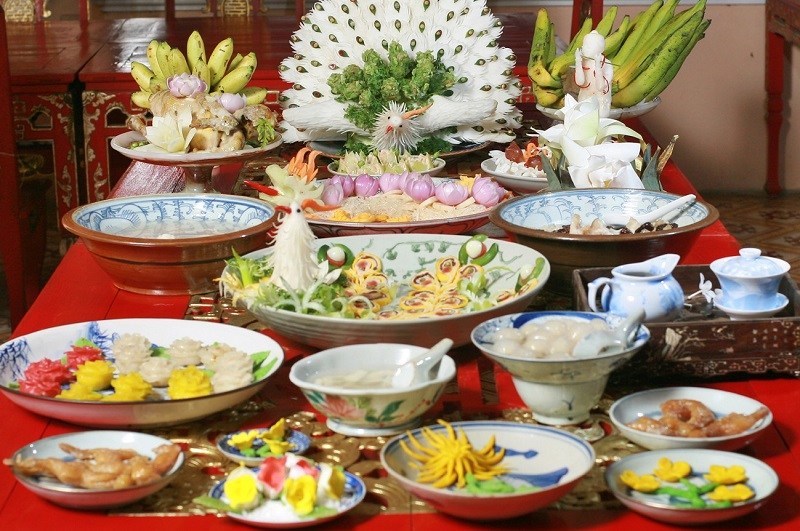
Hue royal cuisine is an important part of the ancient capital’s cultural heritage
2These delicious dishes represent royal power
Hue royal cuisine has more than 30 dishes, including a group called Bat Tran, which means especially rare dishes. This is a group of eight top and rarest dishes in Hue royal cuisine, including:
2.1 Nem Cong
This is the top dish in the bowl of pearls, demonstrating the quintessence and special rarity of Hue royal cuisine. Nem is made from finely pounded peacock thigh meat, mixed with garlic, galangal, pepper and other spices.
However, the special feature of this dish is the natural fermentation process, ensuring the fresh flavor is maintained. This is also a dish that shows the sophistication and meticulousness of the chef when preparing Hue royal cuisine, only appearing at royal banquets or major ceremonies of the year.
2.2 Pho phoenix cake
Not only is it a unique dish in Hue royal cuisine, phoenix rolls represent the sophistication and meticulousness required when preparing this dish. Poinciana cake is a unique dish, only appearing on royal banquet tables on special days or major holidays.
Poinciana rolls are made from male phoenix meat, mixed with spices, rolled in banana leaves and steamed. This is also a dish with medicinal properties, used to improve the health of kings in the past.
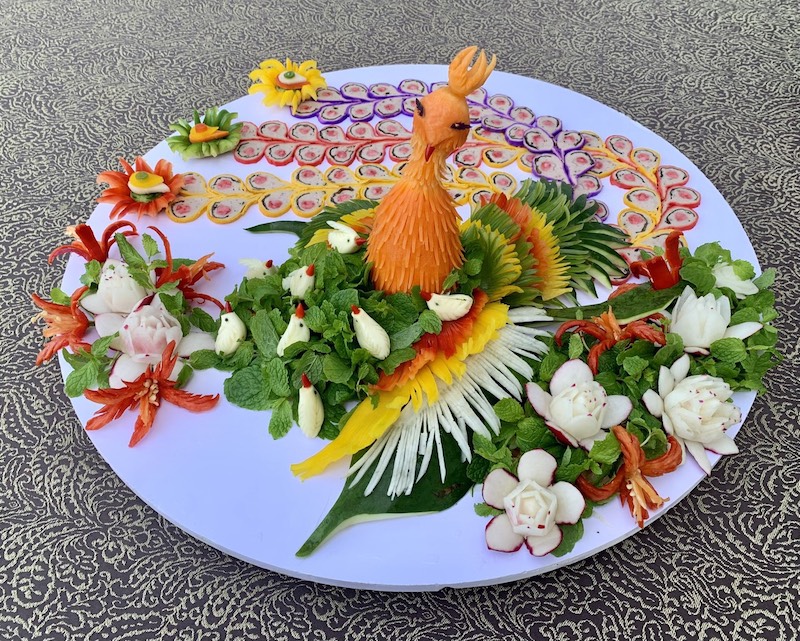
Poinciana cake is a unique dish, only appearing on royal banquet tables on special days or major holidays
2.3 Ox skin
Ox skin is a unique dish of Hue royal cuisine, not only possessing an attractive flavor but also representing the respect and preciousness of the ancient capital’s culture. The dish is made from armpit meat, which has high nutritional value.
2.4 Bear’s paw
Bears are animals that move a lot and climb well, so their arms are strong and have a lot of nutrition. In Hue royal cuisine, bear paws are combined with other ingredients and spices to become an attractive and precious dish.
2.5 Deer tendon
Deer tendon is a rare ingredient and one of the most special dishes in Bat Tran. The chef will stew deer tendon with bamboo shoots, dried shrimp, and pork sausage, creating an attractive dish with a unique flavor.
2.6 Orangutan lips
Orangutan lips are the rarest dish in Hue royal cuisine, demonstrating the sophistication and skill of the chef when preparing and presenting this dish. Because it is so rare, orangutan lips are the only dish served to the king.
2.7 Elephant leg meat
Elephant feet is a dish that represents the luxury, sophistication and class of the royal court in the past. This dish is only served exclusively for the king, combining elephant feet with many ingredients and spices, creating a harmonious dish between flavor, color and taste.
2.8 Bird’s nest
From time immemorial, bird’s nest has been a high-quality, especially precious ingredient. This dish symbolizes luxury and extravagance in Hue royal cuisine. Bird’s nests are stewed with pigeon meat as well as combined with other ingredients to create creative, attractive, nutritious dishes.
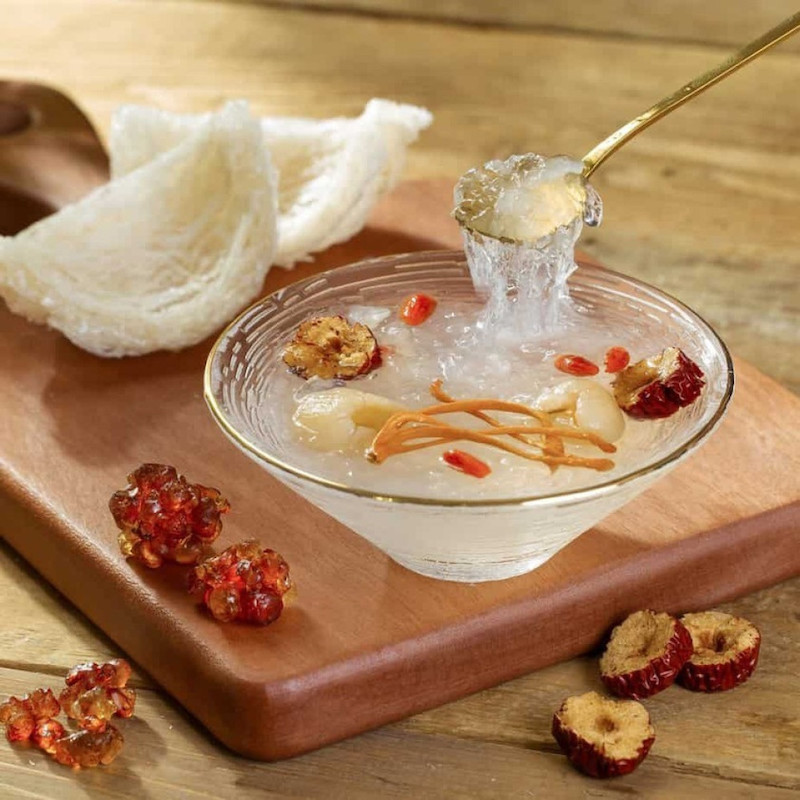
Bird’s nest is a high-quality, especially precious ingredient, a dish symbolizing luxury and extravagance
3 The dishes represent Hue royal cuisine today
To suit the cultural conditions, weather as well as the preferences of local people, today, Hue royal cuisine has changed somewhat, leaning towards a lighter side.
Today’s pearl bowl dishes include abalone, fish fin, bird’s nest, fish maw, sea cucumber, liver, sturgeon eggs and lobster. In particular, these dishes are also more frugal, while still maintaining sophistication and making the most of the nutrients in each ingredient.
In today’s Hue royal cuisine, dishes can include:
3.1 Hue royal lotus rice
Around the 18th century, lotus rice was originally a dish served to the Nguyen Dynasty kings. However, today, lotus rice is one of the dishes on the list of Hue royal cuisine.
Inspired by the blooming lotus flower, lotus rice has an eye-catching appearance and a pleasant, faint aroma. The rice is made from fragrant rice from An Cuu village, cooked with lotus seeds, pork sausage, fried eggs, chicken, shrimp and other vegetables and cleverly wrapped in lotus leaves.
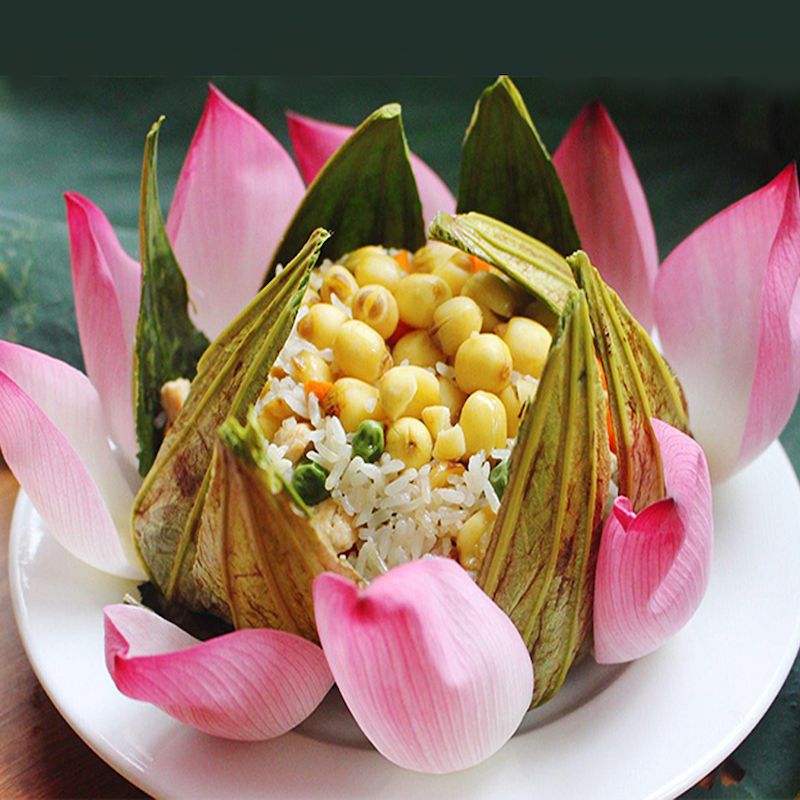
Inspired by the blooming lotus flower, lotus rice has an eye-catching appearance and a pleasant, faint aroma
3.2 Longan and lotus seed tea
With only three ingredients including lotus seeds, longan and granulated sugar, this is the most delicate and special dish in Hue royal cuisine today.
To cook a delicious cup of sweet soup, the chef only uses Hue lotus seeds, and the longan must have small seeds and crispy flesh. Lotus seeds will be skillfully nested into longan like pearls, eaten with sweet sugar water and have an eye-catching clear color.
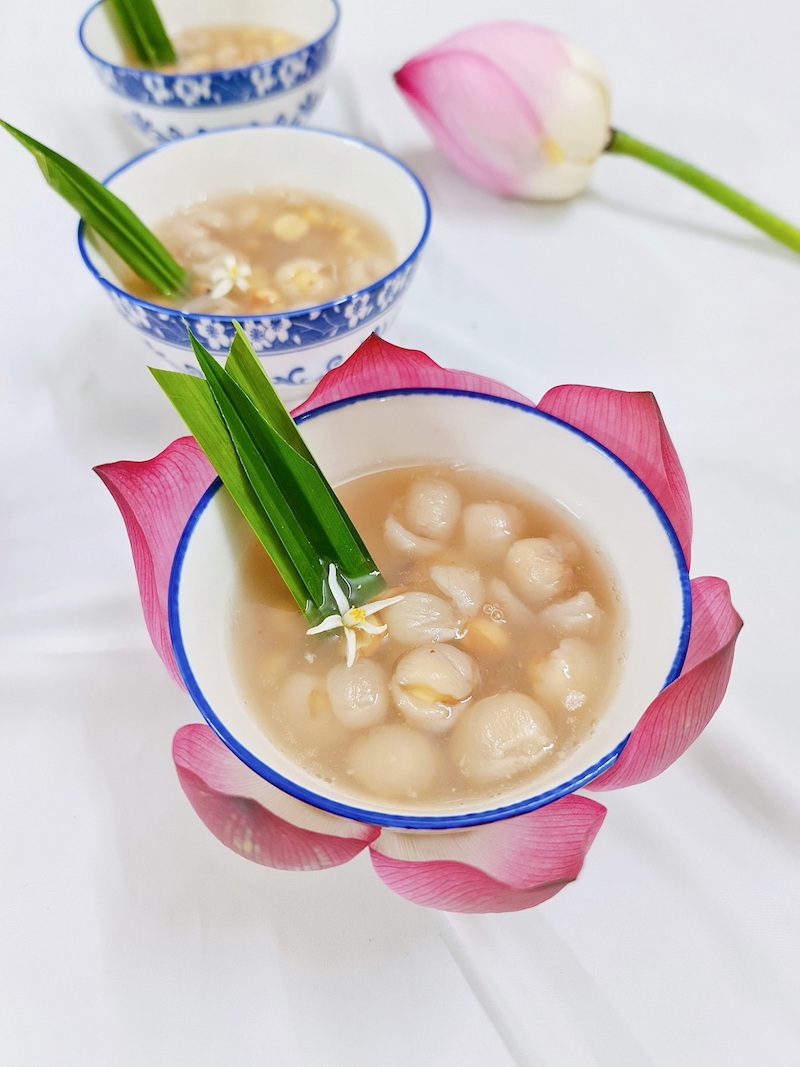
Lotus seeds will be skillfully inserted into longan like a pearl, eaten with sweet sugar water
3.3 Hue royal tea
Hue Nhat Da De Vuong royal tea possesses a unique flavor, rarely compared to any other tea. This drink is made from rare herbs, which are effective in improving health.
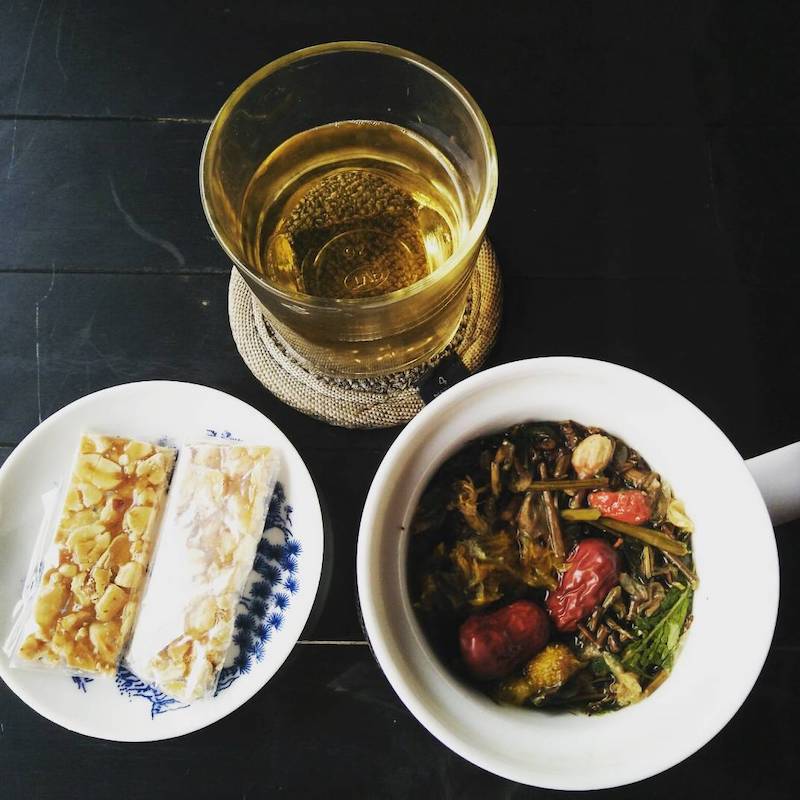
Hue Nhat Da De Vuong royal tea possesses a unique flavor, rarely compared to any other tea
4 Addresses to enjoy Hue royal cuisine
Cung Dinh Restaurant, 38 Nguyen Sinh Sac, Hue City – Reference price: 500,000 – 1,000,000 VND/person
Tinh Gia Vien, 7/29 Le Thanh Ton, Hue City – Reference price: 30,000 – 350,000 VND/dish
Les Jardins de la Carambole (Les Jardins de la Carambole), 32 Dang Tran Con, Hue City – Reference price: 100,000 – 1,000,000 VND/dish
Ancient Hue Restaurant, 4/4/8 Kiet 35, Pham Thi Lien, Hue City – Reference price: 1,000,000 – 2,750,000 VND/person
Y Thao garden house 03 Thach Han, Hue City – Reference price: 280,000 – 600,000 VND/dish
Hue royal cuisine is an important part of Vietnam’s cultural heritage with dishes containing sophistication, elegance and uniqueness. Hue royal culinary culture demonstrates excellence, respect for tradition, and pride in the country’s cultural heritage. Today, Hue royal cuisine still exists and is widely spread. If you have the opportunity to visit the ancient capital, you can enjoy it to better understand the culinary culture of the ancient palace.
